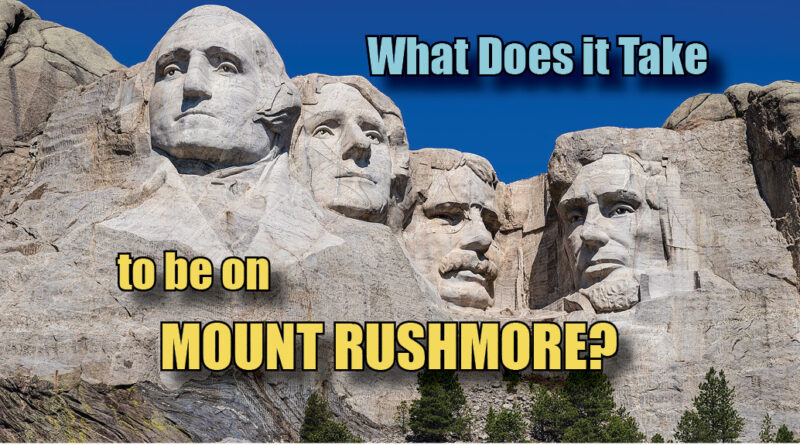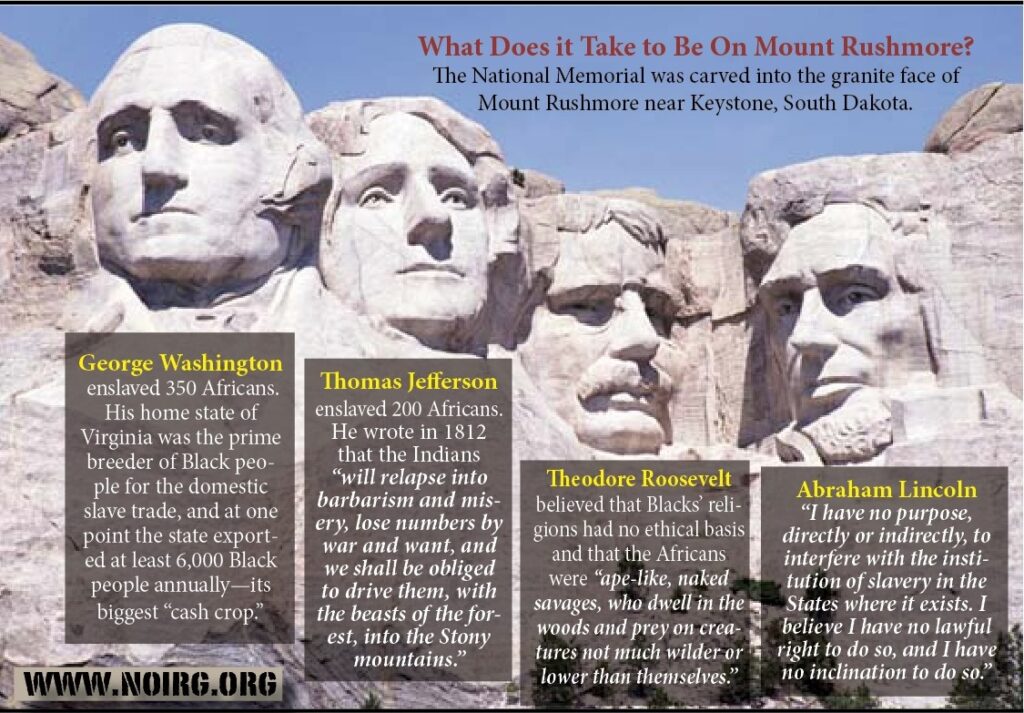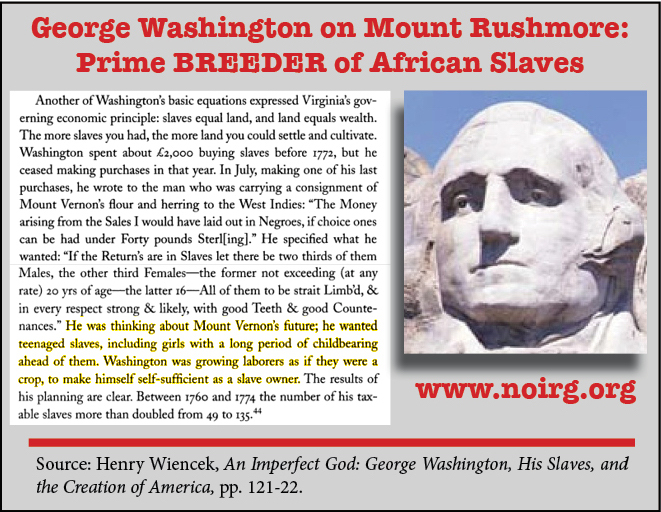What Does it Take to Be on MOUNT RUSHMORE?
The revered father of America, George Washington, was one of the largest slave owners in American history. His home state of Virginia was the prime breeder of Black people for the domestic slave trade and at one point the state exported 6,000 Black people annually—their biggest “cash crop.” In 1786, Washington held 216 Black Africans—116 workers, 92 children, and 8 infirm. This unusually high number of children who were unable to work the plantation indicates that George was heavily involved in the breeding of Black people for the domestic slave trade. Washington mockingly gave his Black captives such names as:
Sall Brass, Breechy, Suck, Lame Alice, Virgin, Jupiter, Dorcas, Hercules, Giles, Paris-boy, Doll, Cook Jack, Sambo , Opey, Winny, Sucky, Flukey, Suck Bass, House Sall, Caesar, Cupid
According to historian Henry Wiencek, Washington
“was thinking about Mount Vernon’s future; he wanted teenaged slaves, including girls with a long period of childbearing ahead of them. Washington was growing laborers as if they were a crop, to make himself self-sufficient as a slave owner.”
In at least one horrific instance in 1769, Washington is found actually raffling off Black children and “wenches,” a fact that historians have deliberately concealed. Writes Wiencek:
“Before he donned his Olympian raiments as Revolutionary commander and our first president, Washington was just another striving young planter, blithely ordering breeding wenches from his slave trader, blithely exiling a man to a likely death at hard labor.”[1]
From his birth to his death (and beyond) Washington was a slaveholder and a breeder of humans. At his death in 1799, this American nazi held captive 317 Black human beings.[2]
[1] Henry Wiencek, An Imperfect God: George Washington, His Slaves, and the Creation of America (New York: Farrar, Straus and Giroux, 2003).
[2] Frederic Bancroft, Slave Trading in the Old South (New York, 1931), 67-87; “George Washington,” American History Illustrated, February 1985, 16; “Diary of George Washington,” Publications of The Colonial Society of Massachusetts, April 1902, 358-64.



